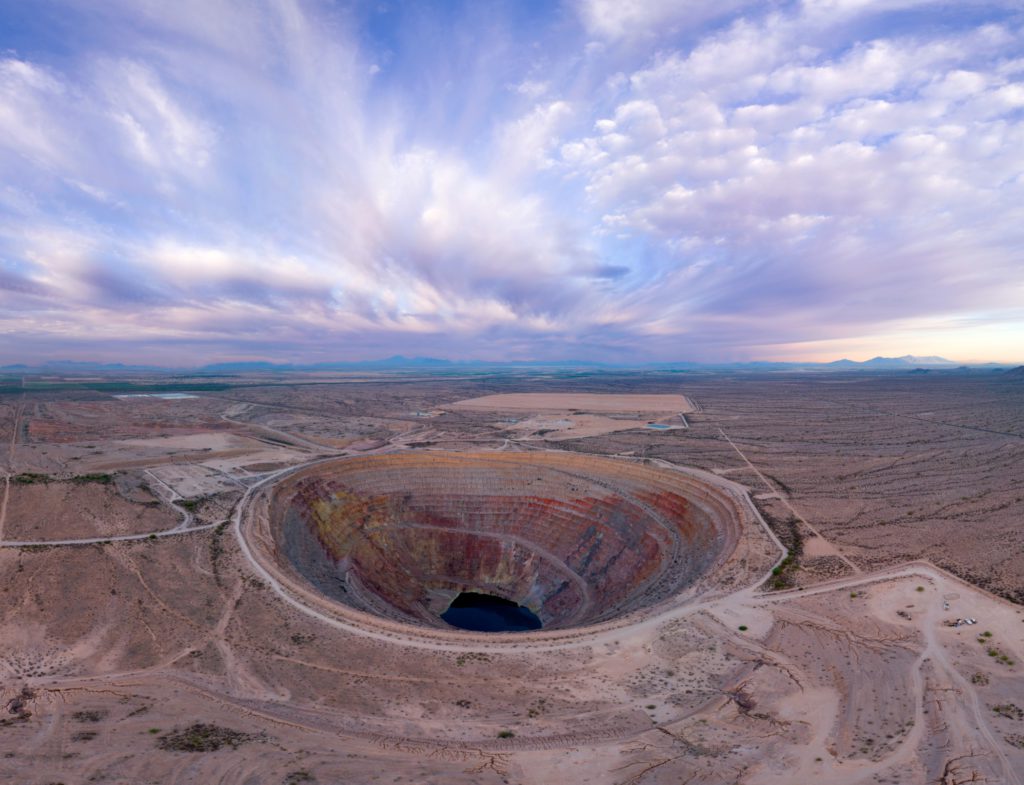
Arizona Sonoran Copper (TSX: ASCU) stock closed 10% higher in Toronto Thursday after the company signed a deal that could make a Rio Tinto (LSE: RIO; ASX: RIO) subsidiary a partner and de-risk the Cactus project.
The collaboration could earn Nuton a 40% stake in the project on the site of the past-producing Sacaton mine south of Phoenix. It also injects up to $33 million in non-dilutive financing into Sonoran when current capital-raising conditions for junior miners are tough, president and CEO George Ogilvie told The Northern Miner in an interview.
“It’s a phenomenal outcome for us,” Ogilvie said. “This collaboration provides us with access to Nuton’s cutting-edge technology and aligns it with the technical and operational expertise of a global mining leader.”
The project, ranked by S&P Global in August as one of the top 10 copper developments in the United States by resource size, illustrates how mining companies are returning to old mines to use better technology and meet the growing need for metals.
Rio Tinto invested C$30.5 million for a 7.4% stake last year in the project that may use technology developed by its Nuton unit. The funding means Sonoran can avoid issuing new shares to raise capital, which would dilute existing shareholders’ stakes. Rio-backed Nuton’s involvement lends credibility and financial stability to the project, which may produce as much as 50,000 tonnes a year of copper cathode.
Sonoroan shares closed on Thursday at C$1.66 apiece. They’ve lost 5.7% over the last 12 months when they traded from C$1.30 to C$2.40. The company has a market capitalization of C$181 million.
If Nuton exercises its option, Sonoran could receive a substantial payout based on a percentage of the project’s base case net present value. The amount would cut the equity it needs to raise, reducing the financial burden on the company and its shareholders.
It will be the first commercial application of Rio’s Nuton technology, Ogilvie said, stressing the company will do its best to prove it can be applied elsewhere.
“The partnership implies a shared commitment from both Sonoran and Nuton to the project’s success,” he said. “This backing is likely to facilitate smoother project execution and technological implementation.”
Integrating Nuton’s technology into the Cactus project carries minimal risks because it can be used in standard heap leaching and SX-EW processes, he said. These are already well-understood and established in the mining industry.
In October, Arizona-Sonoran nearly tripled its measured and indicated resource at the Cactus porphyry project. Cactus has 446 million measured and indicated tonnes grading 0.58% copper for 5.2 billion lb. of the metal, according to a resource update on October 16. That compares with 151.8 million measured and indicated tonnes at 0.53% copper in a resource issued in April last year.
The upgrade for the combined Cactus, Stockpile and Parks/Salyer deposits is to form the basis for a pre-feasibility study expected early next year, Ogilvie said.
The project aims to be a mid-tier producer with the potential for a phased expansion.
Inferred resources are now 233 million tonnes grading 0.47% copper for 2.2 billion lb. of the metal compared with 450 million tonnes at 0.54% copper for 4.9 billion lb. copper in a resource dated April last year.
Sonoran plans to release a pre-feasibility study on Cactus in early 2024 and a final feasibility study by the end of next year. Also due in 2024 is Nuton’s decision to exercise its option, secure additional permits, formalize the joint venture structure with Nuton, and finalize the project’s financing and development strategy.
The Mainspring discovery south of Cactus will be aggressively drilled to develop an inferred resource early in the year and upgrade it to an indicated resource by mid-year.
The advent of Nuton’s technology at Cactus potentially hints at broader regional collaboration opportunities. Ogilvie says it doesn’t take much imagination to do back-of-envelope calculations about what Nuton could mean for the neighbouring Ivanhoe Electric (TSX: IE) -owned Santa Cruz project.
The mineralized system that Ivanhoe Electric is exploring appears to be an extension of the system on which the Cactus project is based. Ogilvie noted that if the Nuton technology proves successful at the Cactus site, there’s a high likelihood that it could also apply to the Santa Cruz project, given the probable similarity in mineralogy and geology.
Ogilvie says regional consolidation remains a compelling future opportunity under the right circumstances. Still, he suggests combining the Cactus resource (with its 7.5 billion lb. copper) and Santa Cruz (with about 10 billion lb. metal) could create a world-class asset, potentially housing around 20 billion lb. of the red metal.
This asset would be particularly significant given its location in the southwest of the US on private land with access to water, making it an attractive prospect for major copper producers globally.
The brownfield Cactus site has about $30 million of infrastructure and is at an advanced permitting stage with access to water and approved water rights, Sonoran says. The project is in an industrial park connected to nationwide highways, railroads and state power.